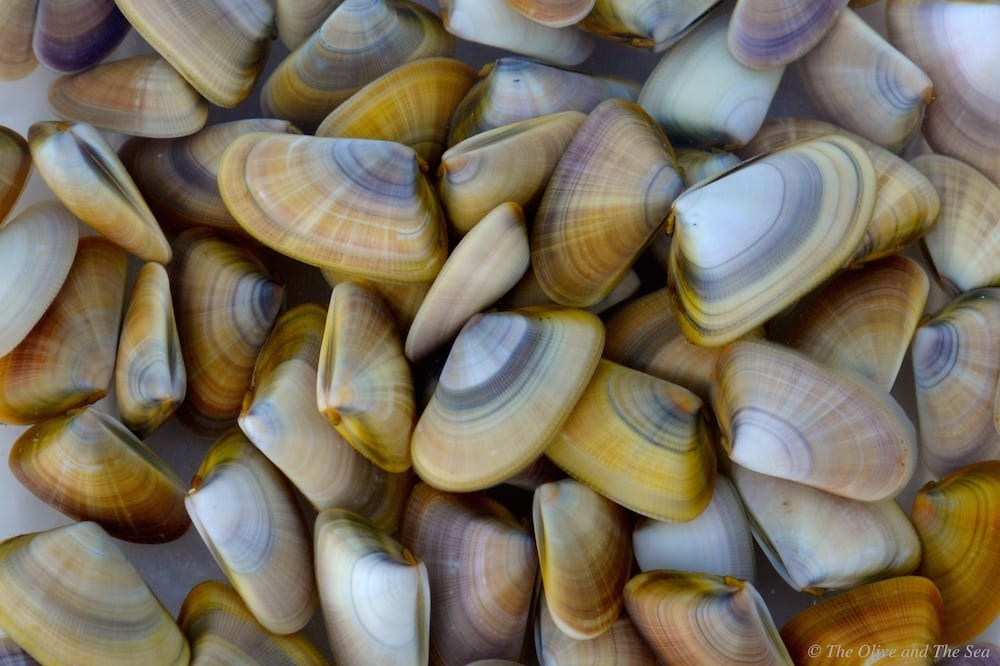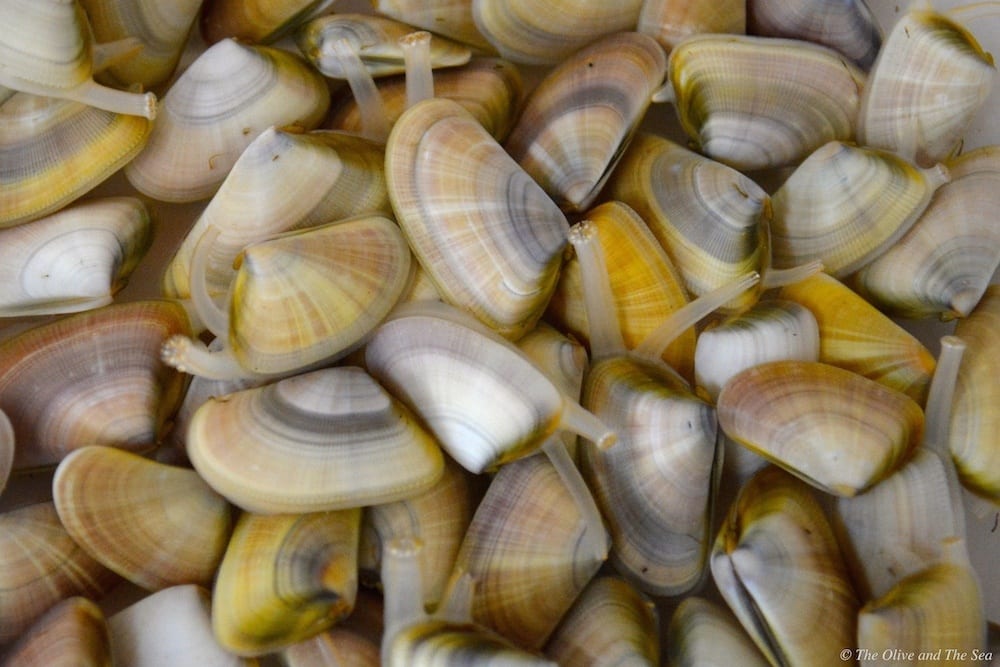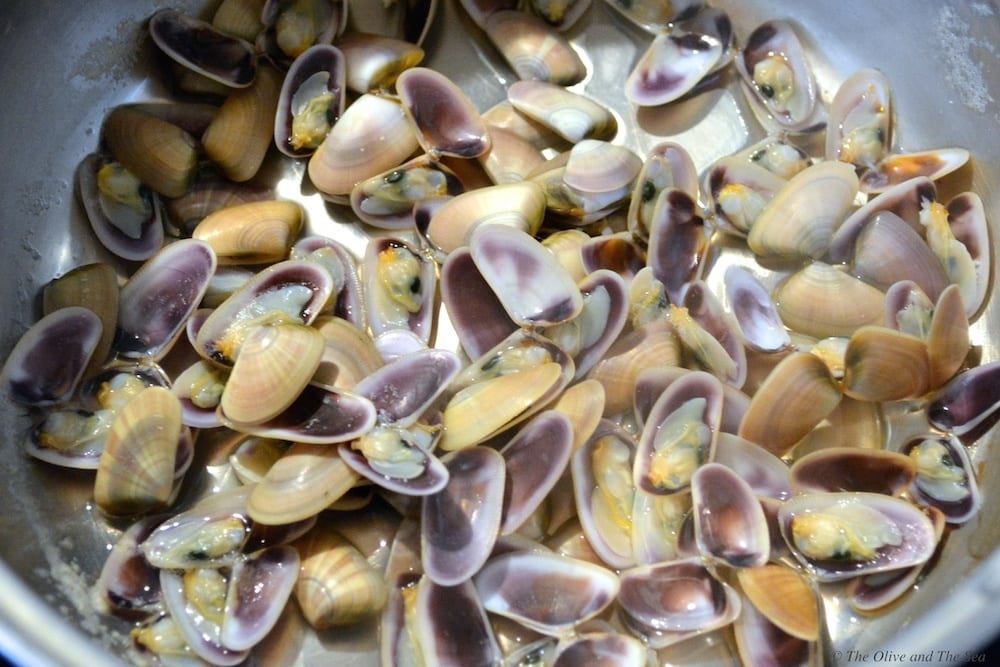Cleaning and Freezing Coquina Clams

Coquina clams, known as “midia” in Greek, are found in the sand along the shore line. Foraging for coquina clams is a lot of fun and makes for a great family activity on the beach. Following the steps outlined below and you can add them to your cooking with dishes like saganaki or seafood pilaf.
The key with preparing coquina clams or any clam for that matter is to rid them of the tiny sand granules before cooking them. Skip this step and you’ll have a gritty dish that few are likely to enjoy. The key is to soak the clams in a bucket of sea water for 24 hours.
The Process
Grab extra sea water
Fill a bucket with fresh sea water and place the clams in the water. The clams should soak for 24 hours but you will need to change the water 2-3 times to ensure that it contains sufficient oxygen. Note that the salinity of the water is important and you can use fresh water or tap water for this process. Unless you live right on the beach, fill some extra bottles and buckets with sea water before heading home.
Refreshing the water in the bucket
If picking the clams in the morning, change the water mid-day, that evening, and the next morning. If picking the clams in the evening, change the water the next morning and again the following afternoon.
Checking on the Coquina Clams
It is important that the clams remain alive during the soaking process. This is easy to determine, as they will extend from their shells while soaking, as shown below.

Cooking or Freezing the Coquina Clams
After the clams have soaked for 24 hours, they are ready to be cooked. You can either add them to the desired dish for cooking at that time, or boil and freeze them for use at a later date. If opting to freeze them, place the clams in shallow boiling water for 5 minutes. As they cook, the clams will pop open.

Once all of the clams have popped open, leave in the pan to cool. Once cooled, pour the clams and their broth into a zip lock or other freezer container and store in the freezer.
